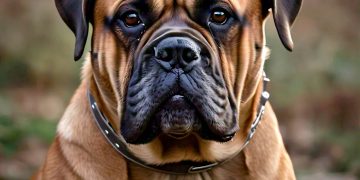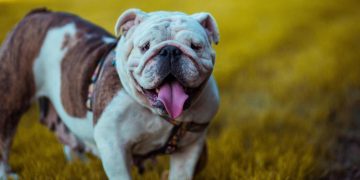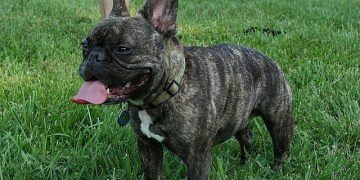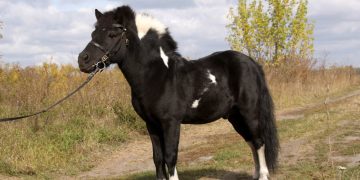As a responsible horse owner, one of your primary concerns should be your horse’s well-being. Horses, like humans, can experience pain, and recognizing the signs early is crucial to providing proper care. While they cannot communicate verbally, horses show a variety of subtle and obvious symptoms when they are in discomfort. In this article, we will explore the common signs of pain in horses, how to recognize them, and steps you can take to ensure your horse’s health.
1. Behavioral Changes: A Key Indicator
Behavioral changes are often the first noticeable sign that something is wrong with your horse. A horse in pain may exhibit different behaviors compared to its usual disposition. Some of the common behavioral signs include:
- Lethargy or Reduced Activity: Horses in pain may become lethargic and avoid activities they once enjoyed, such as running or playing. They may also refuse to work or exercise, showing a reluctance to move.
- Aggression or Irritability: Pain can lead to an increase in irritability or aggression. Horses might snap at handlers or become more sensitive when touched, especially around the painful area. This can be a response to discomfort, frustration, or fear.
- Changes in Eating or Drinking Habits: Pain can lead to a decrease in appetite, resulting in a horse eating less hay, grain, or other food. In some cases, they may also drink less water, which can exacerbate dehydration and other health issues.
- Withdrawal or Isolation: A horse in pain may become withdrawn, preferring to be alone rather than socializing with other horses or humans. This isolation can be a direct result of discomfort or a way for the horse to avoid further distress.
2. Physical Signs of Pain
Horses, like other animals, rely on body language to communicate distress. If you closely observe your horse’s body, you may notice several physical signs that point to pain.
- Limping or Lameness: Lameness is one of the most obvious signs that your horse is in pain. If your horse is favoring one leg, limping, or walking stiffly, it may be experiencing joint pain, hoof problems, or an injury to the muscles or ligaments.
- Abnormal Posture: A horse in pain may adopt an abnormal posture to relieve pressure on a painful area. For example, they may stand with their weight shifted to one side or keep one leg raised. They may also arch their back or stiffen their neck.
- Sweating: Horses typically sweat during physical exertion or on hot days. However, excessive sweating, especially without any strenuous activity, can be a sign of pain, especially in cases of colic, illness, or injury.
- Facial Expressions: Pay close attention to your horse’s facial expressions. A tense or drawn-in face, wide nostrils, or clenched jaw are all signs that your horse may be experiencing discomfort.
- Shifting Weight or Lying Down More Than Usual: Horses in pain may frequently shift their weight to avoid pressure on painful areas. They may also lie down more often or for extended periods, which is unusual for a horse that is not in distress.
3. Gait and Movement Changes
Horses that are in pain often have difficulty moving normally. Any deviation from their usual gait can indicate discomfort.
- Stiffness or Decreased Range of Motion: A horse that is reluctant to move, or exhibits stiffness in its gait, may be suffering from joint pain, arthritis, or muscle strain. Pay attention to how your horse walks—if they seem slow or rigid, they might be in pain.
- Head Movements: Horses with neck or back pain may hold their heads unusually high or low. They may also avoid turning their heads to one side or resist bending down.
- Tripping or Stumbling: When horses are in pain, they may trip or stumble more often due to discomfort in their legs, hooves, or joints. This could be due to an injury, muscle strain, or neurological issues.
4. Changes in Coat and Skin Condition
The condition of your horse’s coat and skin can also reveal potential pain. Pain from illnesses, injuries, or discomfort can manifest in the following ways:
- Rough or Dull Coat: Horses that are in pain due to illness or distress may have a rough or dull coat. A glossy, healthy coat is often a sign of good health, so any changes in texture or shine could indicate discomfort.
- Increased Sensitivity to Touch: Pain can cause your horse’s skin to become more sensitive to touch. They may flinch, swish their tail, or show signs of discomfort when being groomed or handled.
- Wounds or Sores: Always check your horse’s coat for any signs of injury, cuts, or abrasions that could be a source of pain. Horses can suffer from abrasions from tack, equipment, or even rough play with other horses.
5. Signs of Colic and Digestive Distress
Colic is one of the most common and serious sources of pain in horses. Colic refers to abdominal pain and can be caused by various issues, including gas, constipation, or gut twisting. Signs of colic include:
- Pawing at the Ground: One of the classic signs of colic is pawing at the ground, often accompanied by restlessness and discomfort. Your horse may also look at their sides or repeatedly lie down and get up.
- Rolling or Laying Down Frequently: Horses with colic may roll or lay down excessively, trying to relieve their discomfort. However, rolling can also be dangerous if the gut twists, so it is essential to monitor and consult a veterinarian promptly.
- Abnormal Bowel Movements: A horse with colic may experience changes in bowel movements, including diarrhea, constipation, or the absence of manure altogether.
- Distended Abdomen or Sweating: The abdomen may appear bloated or distended, and your horse may sweat excessively even without physical exertion.
6. Recognizing Pain Early: The Importance of Vigilance
Pain in horses can be subtle, and early detection is key to preventing further complications. Regularly observing your horse’s behavior, movement, and general well-being can help you identify potential issues before they become more serious.
- Routine Health Checks: Regular vet visits are essential for maintaining your horse’s overall health. These check-ups can help identify any underlying conditions that may not yet show obvious symptoms.
- Proper Tack Fit: Ensure that your horse’s saddle, bridle, and other tack fit correctly. Poorly fitting equipment can cause discomfort, leading to pain, sores, or even long-term injury.
- Environmental Changes: Stress from environmental changes, such as new routines, new horses, or changes in feeding or housing, can also contribute to pain. Horses are sensitive creatures, and significant changes can cause physical and emotional stress.
7. When to Seek Professional Help
If you suspect that your horse is in pain, the first step is to assess the situation and determine the severity of the issue. If the pain is mild or if you’re unsure, consult with your veterinarian. If the pain is severe, or if symptoms like colic, lameness, or drastic changes in behavior occur, seek immediate veterinary assistance.
Veterinarians will typically conduct a thorough examination, including palpating the painful areas, running diagnostic tests, and assessing the horse’s overall health. Treatments will vary based on the cause of the pain but may include pain management, anti-inflammatory medications, rest, or even surgery in more severe cases.
Conclusion
Recognizing the signs that your horse may be in pain is crucial for ensuring their well-being. By being observant and attentive to your horse’s behavior, movements, and physical condition, you can catch potential issues early and take appropriate action. Regular health checks and a proactive approach to care can help prevent pain from developing into more serious problems. Always consult a veterinarian if you suspect your horse is in pain, as timely intervention can make all the difference in their recovery and quality of life.

























